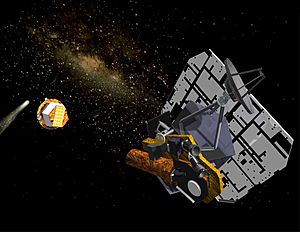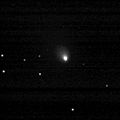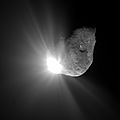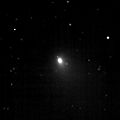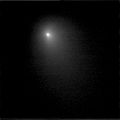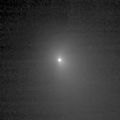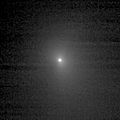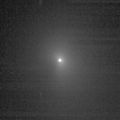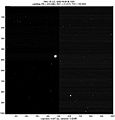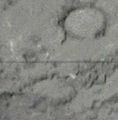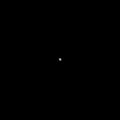Deep Impact (space mission) facts for kids
Deep Impact was a special NASA space mission. Its main goal was to learn more about comets. The mission sent a spacecraft to meet a comet called Tempel 1. A smaller part of the spacecraft then crashed into the comet's surface.
Contents
Launching into Space
The Deep Impact mission started on January 12, 2005. It launched from Cape Canaveral, Florida, in the United States. A Delta II rocket carried the spacecraft into space. The spacecraft traveled a very long way. It reached Comet Tempel 1 in July 2005. At that time, the comet was about 134 million kilometers (83 million miles) from Earth.
Crashing into a Comet
After taking many pictures, the Deep Impact spacecraft prepared for its main event. A smaller, 370-kilogram (816-pound) part called the "impactor" was sent towards the comet. On July 4, 2005, the impactor crashed right into the comet's surface. This crash made a huge hole, called a crater. It also blasted parts of the comet into space. The main Deep Impact spacecraft then studied this flying debris. This debris included ice and dust from deep inside the comet.
What We Learned
By studying the material blasted from the comet, scientists learned a lot. They found that Comet Tempel 1 had water ice. This ice was both on its surface and deep inside. One scientist said the comet was like a "skating rink of snowy dirt." Scientists also figured out where the comet likely formed. They believe it came from the area between the planets Uranus and Neptune. This mission helped us understand what comets are made of. It also showed us how they might have formed long ago.
After the Impact
After its main mission, NASA wanted Deep Impact to study another comet. This comet was named 85P/Boethin. However, Comet 85P/Boethin did not return on its expected path around the Sun. It has not been seen since then.
Images for kids
-
Comet Tempel 1 imaged on April 25, 2005 by the Deep Impact spacecraft
-
Comet Tempel 1, imaged from 4.2 million km at the start of Impact phase
See also
 In Spanish: Deep Impact (sonda espacial) para niños
In Spanish: Deep Impact (sonda espacial) para niños


